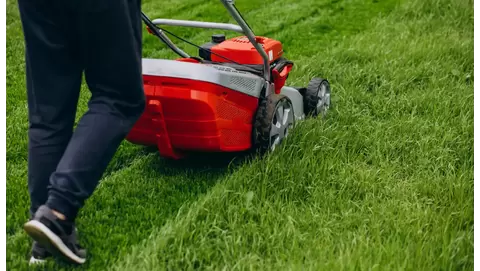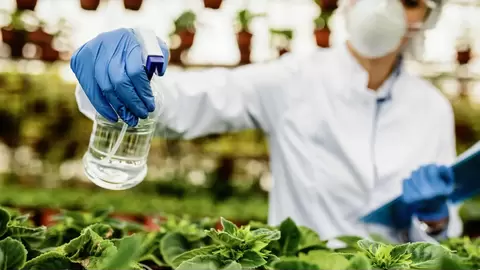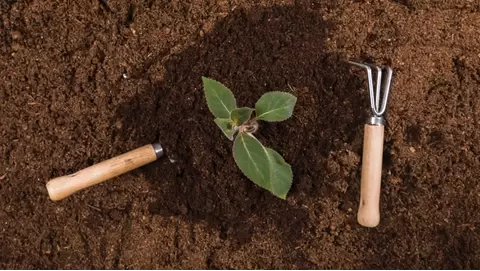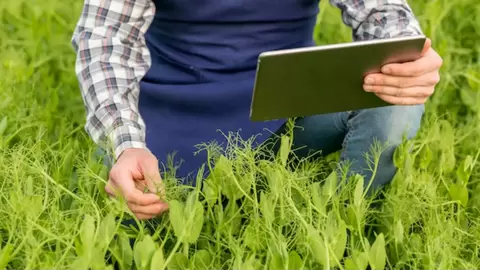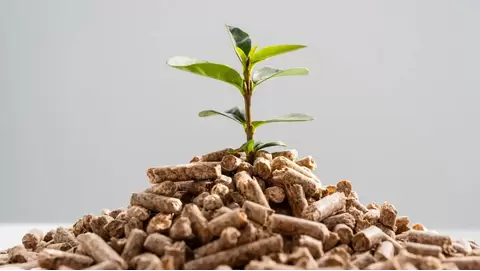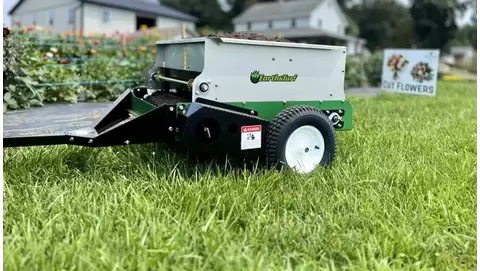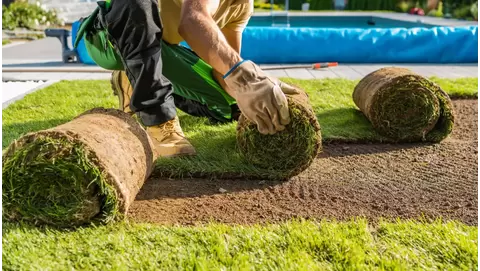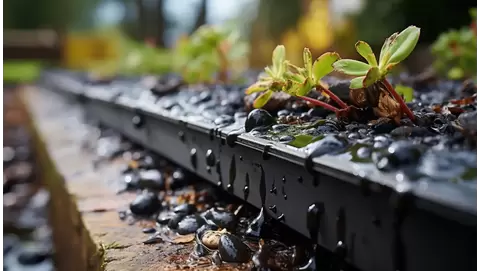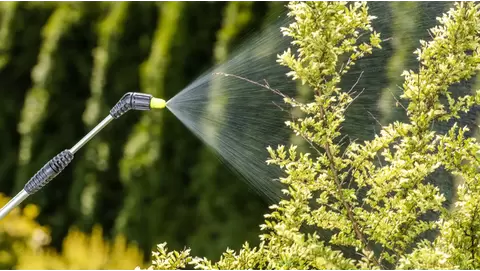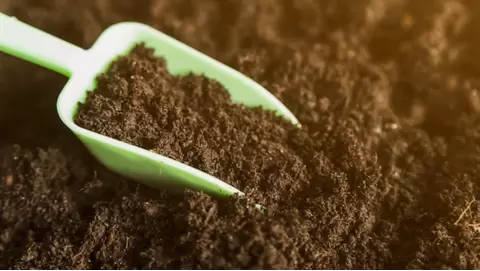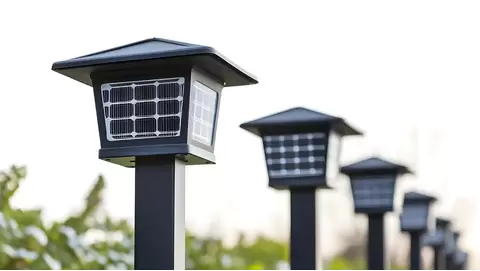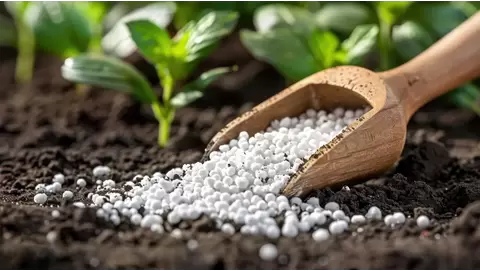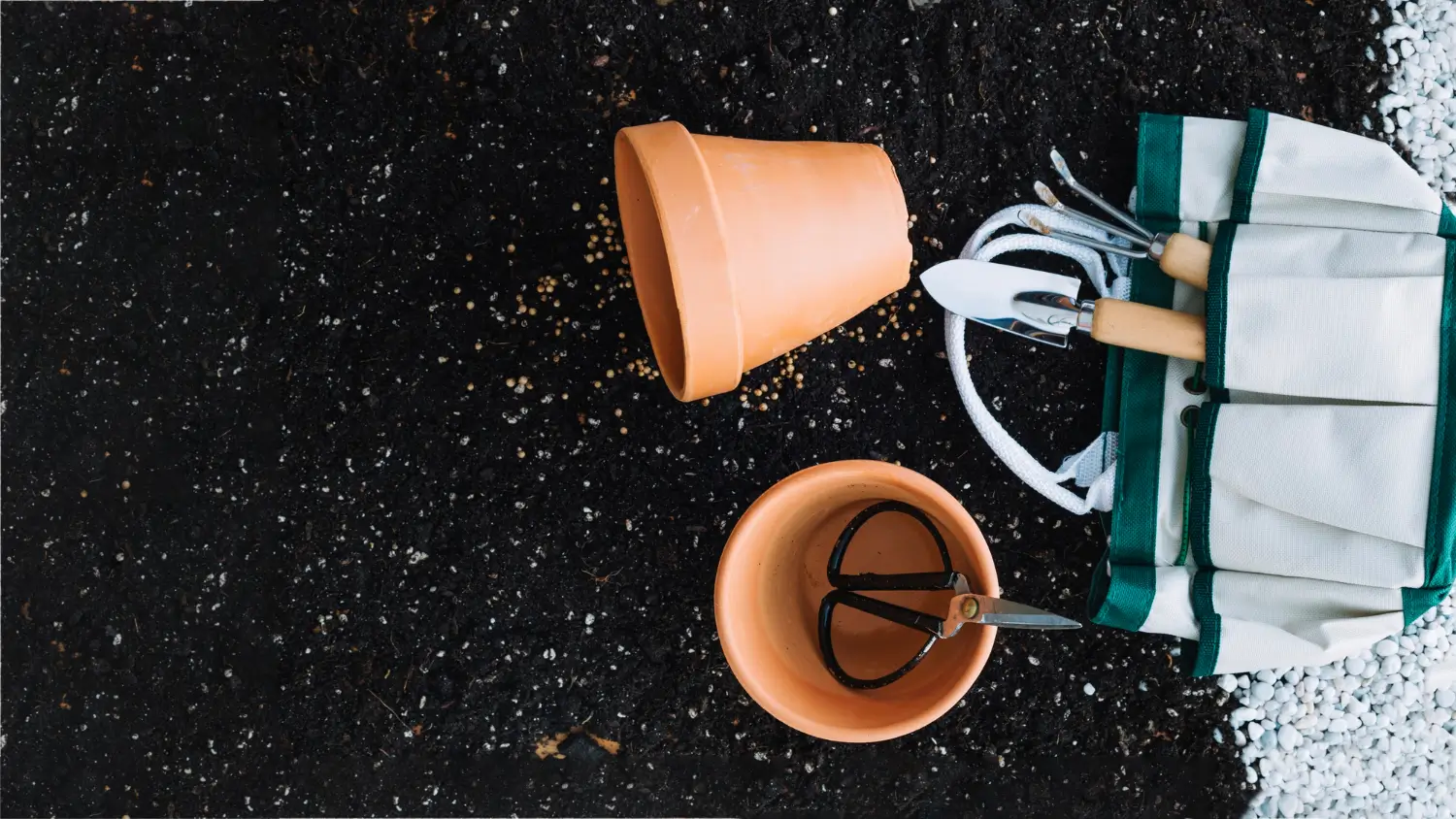
Gypsum for soil: Improve drainage and reduce compaction
Soil health is important for successful gardening and farming. Good soil supplies nutrients, nurtures healthy root development and permits proper water movement. But for many horticulturists and farmers, it's a struggle with hard soil, poor drainage, and rich clay soil.
The use of gypsum is one solution to these problems. This organic mineral enhances soil structure by separating heavy clay and is beneficial for water and air penetration. This allows plant roots to develop more easily in healthier soil.
Gypsum for soil provides a quick and eco-friendly solution to break up compacted soil and enhance soil conditions for healthier plants. Growcycle is the one stop market for gardeners and farmers who want to improve sores using gypsum.
Understanding Soil Structure and Challenges
Soil is one of the most important essential elements in plant growth, and how well plants receive water, air, and nutrients depends on the composition and structure of the soil. Different types of soils behave differently and they can have certain problems, like compaction and not being well-drained, that make it difficult for plants to grow. Familiarity with these problems leads to effective remedies (such as gypsum) for soil conditioning.
Composition of Soil
Soil has multiple components, all impacting its texture and draining ability:
- Clay: It has small fine particles that can hold water, but it can also compact easily, leading to difficulty for roots to grow.
- Silt: It has smaller particles than sand and retains moisture better but can still cause drainage issues.
- Sand: It has large particles and drains quickly, but does not hold nutrients very well.
- Organic Matter: Contains remains of plants and animals that have decomposed, increases fertility and structure of soil due to greater aeration and water retention.
Healthy soil requires a proper proportion of these components. If clay in the soil retains too much moisture, it can become compacted and impede growth.
Common Soil Problems
Many gardeners and farmers have soil problems that prevent plants from growing. Soil compaction and poor drainage are two of the most common problems.
1. Soil Compaction
- Occurs when soil particles are compressed very tightly together, reducing space between the soil particles that can be filled by air and water.
- Frequent cause includes heavy equipment, foot traffic, or repeated tilling.
- Soil compaction makes it hard for roots to spread and take up nutrients.
2. Poor Drainage:
- Occurs when water cannot pass easily through the soil causing waterlogged conditions.
- Clay-heavy soils drain slowly, choking plant roots.
- Too much water in the soil can lead to root rot and limit the oxygen available, which will weaken plants.
The Role of Soil Structure in Plant Health
Soil particle arrangement influences plant growth. Compacted and waterlogged soils are problematic by restricting root movement, depleting atmospheric oxygen, and hindering the vertical infiltration of water.
- Roots need room to spread out: When the substrate is too dense, roots cannot spread out easily, making nutrient access difficult for the plant.
- Water and air should flow freely: Healthy soil will have pores that provide proper drainage while retaining adequate moisture for a plant.
What is Gypsum?
Gypsum is a naturally occurring mineral that is known to enhance soil quality. It contributes to soil aeration, increases water permeability, and provides nutrients needed for plant development. Gypsum is a common amendment for agriculture and gardening as it can help improve soil structure without altering pH levels.
Chemical Composition and Types
Gypsum for the soil is made of calcium sulfate dihydrate (CaSO₄·2H₂O), a soft mineral with two molecules of water. It occurs in sedimentary rock formations and is obtained through mining or synthesis for a variety of uses.
Gypsum is available in various kinds with unique characteristics:
- Natural Gypsum: Collected from the mineral deposits and then unearthed for agricultural and commercial applications.
- Synthetic Gypsum: A type of gypsum created as a byproduct during industrial processes like flue-gas desulfurization, yielding high-purity gypsum.
- Pelleted or Granular Gypsum: Offered in Pellets or Granular form for easier application in farming and gardening.
- Solution-Grade Gypsum: This is a finely ground powder to be used in irrigation systems and in other liquid applications.
Gypsum comes in different qualities depending on purity and processing technique. While all gypsum is bad, high-quality gypsum will have more calcium sulfate and fewer impurities), making it a more effective soil conditioner.
Historical Use of Gypsum in Agriculture
Gypsum has a long history of use as a soil amendment to improve both soil structure and plant growth. For centuries, farmers have used gypsum to increase soil health. Gypsum was first used by ancient civilizations, such as the Egyptians and Romans, to increase crop yields. It gained prominence as a soil amendment in European and American agriculture during the 18th and 19th centuries. Gypsum became a popular material when farmers noticed it helped drainage, reduced soil crusting, and provided calcium and sulfur which are two important plant nutrients.
Scientific literature subsequently confirmed its benefits in reducing compaction, improving soil aeration, and enhancing root development. Gypsum is still an important soil management tool today, particularly in regions with heavy clay or sodic soils.
How Gypsum Improves Soil Drainage
Gypsum is commonly used to amend soils for better drainage, especially in clay heavy soils that have slow water movement. Gypsum is an inorganic chemical compound that when added to soil changes its structure at a chemical level.
Mechanisms of Action
Gypsum also enhances soil drainage by separating tightly clustered particles of clay. This is accomplished via an ion exchange, whereby calcium ions (Ca²⁺) from the gypsum replace sodium ions (Na⁺) in the soil.
- Clay-rich soils have high levels of sodium that makes particles stick together and forms a hard, compacted layer.
- Gypsum pulls calcium ions that bind to clay particles and by doing so pushes clay particles apart, freeing up space for air and water movement.
- As sodium is displaced, it dissolves and is flushed by rain or irrigation, leaving behind a looser, more-permeable soil structure.
This response minimizes surface crusting, boosts water infiltration, and inhibits runoff, allowing plants to more readily access moisture and nutrients.
Impact on Soil Porosity and Structure
Soil porosity is the amount of space between soil particles where air and water can flow. Gypsum improves porosity, resulting in various advantages:
- Improved Water Infiltration: The loosened soil provides a better infiltration medium so that the water will enter faster and reduce puddling and surface runoff.
- Enhanced Root Penetration: With improved soil structure, plant roots can penetrate deeper into the soil, making better use of available water and nutrients.
- Prevention of Waterlogging: Efficient drainage from well-structured soil reduces the chance of water-logging, which are common causes of root-rot and other water-sourced plant diseases.
Gypsum does not alter pH balance, but enhances soil structure, making it a viable, sustainable remedy for compacted and poorly drained soils.
Gypsum vs. Organic Matter
Gypsum works mainly by ion exchange to improve soil structure, while organic matter (compost, manure) works by improving drainage through increasing the soil’s ability to retain moisture and nutrients. Both gypsum and organic matter can benefit soil structure and fertility.
Gypsum vs. Lime
Gypsum can improve soil drainage without changing pH, whereas lime increases soil pH. While this is good for acidic soils, it is not good for neutral or alkaline soils. In the case of compacted, sodium-hyper rich soils use gypsum; otherwise apply lime to decrease acidity.
Reducing Soil Compaction with Gypsum
However soil compaction is a common challenge in gardening and agriculture, since it restricts plant growth and decreases water absorption. Adding gypsum for soil can be an ideal fix to aid in breaking up compacted soils which is especially handy in areas with heavy clay. Gypsum improves soil structure so that a better environment is formed for root development and nutrient absorption.
Understanding Soil Compaction
Soil compaction results when soil particles are pressed closely together, limiting the soil’s ability to transfer air, water and roots freely through pore space. There are a number of reasons for this to occur:
- Tractors, construction equipment and repeated foot traffic can compress the soil, creating hard, dense zones.
- While tilling is a common method of soil aeration, tilling too much can destroy the soil structure, causing compaction over time.
- Soil compaction is something that occurs naturally over time as a result of rainfall, irrigation, and gravity. It can be especially prevalent in clay-heavy soils.
- That’s because sodium glues soil particles together into an impermeable, dense surface that suffocates roots.
Effects of Compacted Soil on Plants
- The soil is tight and compacted which does not allow the roots to expand and thus restricting their ability to absorb nutrients or water.
- Water runs off instead of being absorbed into the seal, causing dry spots and erosion.
- Plants require oxygen in the soil to live. Compacted soil prevents the flow of air, which suffocates their roots.
The Role of Gypsum in Alleviating Compaction
Gypsum also brings calcium ions (Ca²⁺) to the soil which replace sodium ions (Na⁺), effectively breaking down compacted clay. This process, which enables the loosening of tightly packed particles, increases aeration, enhances water transport through soil particles and assists root penetration.
- Gypsum alters soil texture because it neutralizes the stickiness of clay and produces crumblier soil through which roots can pass.
- Impermeable soil causes water to puddle on the surface or flow, rather than penetrate.
- With less compaction, plant roots can spread more readily and reach deeper water and nutrients.
Scientific Support and Practical Examples
Studies in agricultural research reveal that the use of gypsum can enhance crop yield and reduce bulk density (an indicator of compaction) in clay soils. Gypsum is often used by farmers and landscapers for the rehabilitation of compacted fields, sports fields and gardens, with reported improvements in plant health and soil tillage.
Practical Guidelines for Using Gypsum
Applying gypsum can really improve soil quality, drainage, and lessen compaction. Applying gypsum under the right conditions and using the correct methods are essential to getting the best results. Here are tips for using gypsum in soil management.
1. Identify the Right Soil Conditions
The first step to applying gypsum, is knowing if the soil should have it applied. Here’s how people can determine the need for gypsum:
Testing for Soil Compaction
If the soil feels hard, dry and cracked or plants are stunted with shallow roots, compaction may be to blame.
- Soil Test: To test the ground soil, dig a hole. If the earth is hard and dense, it’s probably compacted. Soils can be tested for resistance to penetration with a soil probe or penetrometer.
- Water Infiltration Test: Fill a void with water and time how long it takes to drain. Significantly slow drainage or standing water may be a sign of compacted soil.
Testing for Clay Content
- Jar Test: Fill a jar halfway with a soil sample and fill it with water to the top. Shake the jar and leave the jar still for it to settle. Sand will settle on top of the clay, and silt will settle on top of the sand. This means that excessive clay can point to a potential need for gypsum.
- Feel Test: Take a handful of collected damp soil and squeeze it. If the soil is sticky or smooth feeling, it likely contains clay.
2. Application Techniques
Gypsum has to be applied correctly in order to get the most benefit from it. Here’s how to apply it:
Recommended Application Rate
For densely packed clay soils, spread 40 to 50 pounds of gypsum per 1,000 square feet; for less packed or sandy soils, 20 to 30 pounds per 1,000 square feet.
Rates can differ at some sites based on soil conditions, so a soil test can be considered to know specific needs. They’re safe in general, and there’s no need to over-apply them.
Timing
Spread gypsum when it’s best to be applied when the soil is mildly moist preferably in the fall or early spring, before planting. This permits gypsum to bind with the soil before the growing season starts. If applying during the growing season, irrigate the soil after the gypsum application; this will aid gypsum to dissolve and percolate into the soil.
Methods of Application
- Broadcasting: Use a spreader to apply gypsum evenly over the soil surface.
- Incorporation into Soil: To improve penetration, rake it into the soil to a depth of around 4-6 inches.
- Post-Irrigation Treatments: If treated areas are watered frequently, gypsum can be directly applied to the surface and moved into the soil during watering.
Benefits Beyond Drainage and Compaction
Gypsum is most commonly utilized to enhance soil drainage and alleviate compaction; however, its benefits reach beyond just these two reasons. It improves soil structure, leading to healthier, higher yielding plants, and helps make agricultural practices an example of environmental sustainability.
1. Improved Root Health
If roots are healthy, plants grow up strong and healthy. A good state of the soil enables roots to spread freely and access into the nutrients required. When soil has plenty of air, a strong root system enables plants to uptake more water and nutrients. This results in healthier plants more resistant to drought, pests and diseases.
2. Enhanced Plant Growth and Yield
Soil quality determines how well plants grow and produce. Well-drained soils that retain sufficient moisture help plants gain access to oxygen, water, and nutrients. This balance enables plants to grow faster and yield more. Healthy soil enables to do more photosynthesis which is the process that allows plants to generate food and energy. This leads to improved growth and bigger crop yields.
3. Environmental Impact
This process also greatly influences the environmental aspects. Well-structured soil is also important to avoid erosion, where the top layer gets washed away by rain. Erosion may damage the land and disrupt local ecosystems and wildlife. Good soil structure allows water to absorb into the soil, which decreases the potential for erosion and runoff.
FAQs
How does gypsum help soil?
Gypsum makes tight clay more porous, enhances water percolation and promotes better root development without affecting soil pH.
How much gypsum should I use?
Use 40-50 pounds per 1,000 square feet for compacted clay soils and only 20-30 pounds per 1,000 square feet for sandy soils.
Is gypsum safe for my garden?
Yes, gypsum is natural, non-toxic, and safe for plants, animals, and the environment to be used as a soil amendment.
The Bottom Line
Gypsum has always been an easy, natural go-to for soil health; particularly in compacted or clay soils. It loosens compacted soil, improves drainage, and facilitates healthy root development to create a better environment for a plant. Gypsum is a safe and efficient soil amendment, since it doesn't alter soil pH.
Growcycle has all the tips and gypsum products needed to revive the tough soil and to grow healthy plants with productive results.
Disclaimer: This material is for informational purposes only and should not be relied on for legal, medical, financial, or any other form of professional advice.



